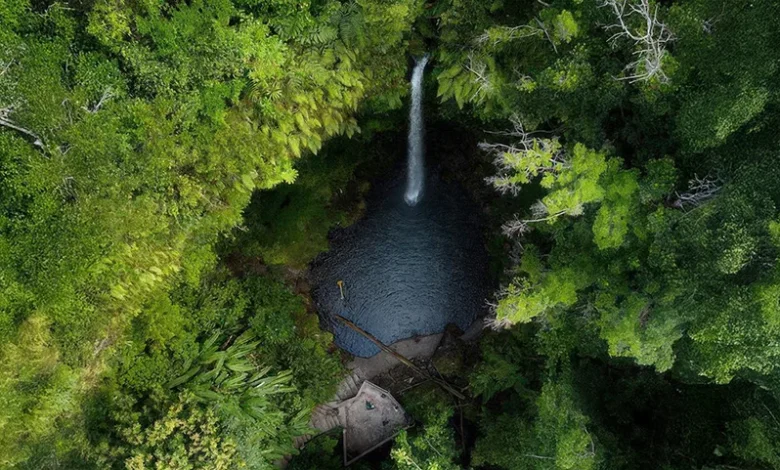Dominica’s Natural Beauty

Dominica’s natural beauty is a hallmark of the Caribbean, earning it recognition as the Nature Island of the Caribbean. Its volcanic landscape, rich biodiversity, and unspoiled ecosystems make it a destination for eco-tourism, cultural experiences, and adventure. From towering mountains and tropical rainforests to vibrant coral reefs and geothermal features, Dominica offers an immersive natural experience that captivates visitors and locals alike.
Diverse Trails and Hiking Opportunities
The island is renowned for its extensive network of hiking trails, the most iconic being the Waitukubuli National Trail. This 185-kilometer trail traverses Dominica’s length, connecting villages, forests, and national parks. Segments like Segment #9, which meanders through Castle Bruce, or Segment #3, which showcases the pristine Northern Forest Reserve. The entire fourteen segments (#1, #2, #3, #4, #5, #6, #7, #8, #9, #10, #11, #12, #13 and #14), highlight Dominica’s rugged landscape and cultural history.
The trails provide access to key natural attractions, including Morne Diablotin, the island’s highest peak, and Morne Trois Pitons National Park, a UNESCO World Heritage Site. Hikers can explore volcanic craters, waterfalls, and coastal vistas, creating a symbiotic relationship between adventure tourism and conservation.
Rivers, Waterfalls, and Geothermal Wonders
Dominica is a land of water, boasting over 365 rivers, each contributing to the island’s lush greenery and agricultural vitality. Rivers like the Layou River, the longest on the island, and the Pagua River, known for its serene beauty, offer opportunities for kayaking, river tubing, and fishing.
Waterfalls such as Trafalgar Falls, Middleham Falls, and Spanny Falls provide breathtaking vistas and swimming opportunities. Dominica’s geothermal activity enhances its allure, with attractions like the Boiling Lake, the world’s second-largest hot lake, and therapeutic hot springs scattered throughout the island, including in Wotten Waven.
National Parks and Forest Reserves
Dominica’s commitment to conservation is evident in its protected areas, which encompass over 20% of its landmass. Cabrits National Park in the north features historical relics like Fort Shirley, while protecting mangroves, coral reefs, and marine life. Morne Trois Pitons National Park showcases volcanic activity, with features like the Valley of Desolation and the Emerald Pool, a natural grotto surrounded by tropical foliage.
The Morne Diablotin National Park serves as a haven for endangered species like the Sisserou Parrot and the Jaco Parrot. Birdwatchers and nature enthusiasts can also explore the Syndicate Nature Trail, which offers close encounters with Dominica’s endemic birds and views of Morne Diablotin.
Flora and Fauna
Dominica’s ecosystems support a variety of flora and fauna. Tropical plants like Gommier trees, tree ferns, and orchids thrive in its fertile volcanic soil. Endemic species include the Mountain Chicken and iguanas, while avian species such as the Plumbeous Warbler and Blue-headed Hummingbird enhance the island’s biodiversity.
Marine life is equally rich, with coral reefs teeming with fish, turtles, and other aquatic species. Coastal areas like Champagne Reef and Soufriere Scotts Head Marine Reserve are prime spots for snorkelling and scuba diving, offering encounters with vibrant underwater ecosystems.
Diverse Tourism Experiences in Dominica
Dominica offers a variety of tourism opportunities that celebrate its unspoiled environment, rich cultural heritage, and adventurous spirit. The island’s tourism strategy emphasizes sustainability, making it an ideal destination for those seeking meaningful and eco-conscious travel experiences.
The island’s mountainous terrain makes it a haven for adventure tourism, providing adrenaline-pumping activities such as hiking, canyoning, and river tubing. Thrilling zipline excursions through rainforest canopies and challenging trails like the Morne Anglais Trail and Boeri Lake Trail showcase breathtaking views and test even seasoned adventurers. Water-based activities, including kayaking and diving at sites like Scott’s Head Pinnacle, The Nose Reef and Coral Gardens also add to the island’s diverse offerings for thrill-seekers.
Dominica’s vibrant communities bring cultural and community tourism to life, offering immersive experiences into local traditions, crafts, and cuisine. Villages like Soufriere, Giraudel, and Calibishie provide opportunities for authentic homestays and workshops on traditional crafts. Annual events, such as the Giraudel-Eggleston Flower Show, highlight the island’s agricultural and horticultural heritage, while local festivals and markets allow visitors to connect with the people and their stories.
Government and Conservation Efforts
The Forestry, Wildlife, and Parks Division plays a pivotal role in protecting Dominica’s natural beauty. They manage conservation programs, maintain hiking trails, and oversee national parks. Organizations like the Dominica Conservation Association and partnerships with international entities such as BirdLife International further enhance conservation efforts.
The government supports sustainable tourism through initiatives like the Eco-Tourism Development Project, which funds infrastructure improvements and promotes environmentally friendly practices.
Infrastructure Supporting Exploration
Dominica’s infrastructure ensures access to its natural attractions. The Edward Oliver Leblanc Highway connects the capital, Roseau, to the island’s interior and the east coast, while the Douglas-Charles Airport facilitates international travel. Ports like Woodbridge Bay and local ferry services enhance accessibility for visitors arriving by sea.
Reflections of the Nature Isle
Dominica’s natural beauty is a tribute to its ecological richness and cultural depth. From its lush rainforests and cascading waterfalls to its vibrant marine life and rugged mountains, the island offers an unparalleled experience. Through conservation and sustainable tourism, Dominica continues to protect its treasures, ensuring they remain a source of inspiration and wonder for generations to come.




